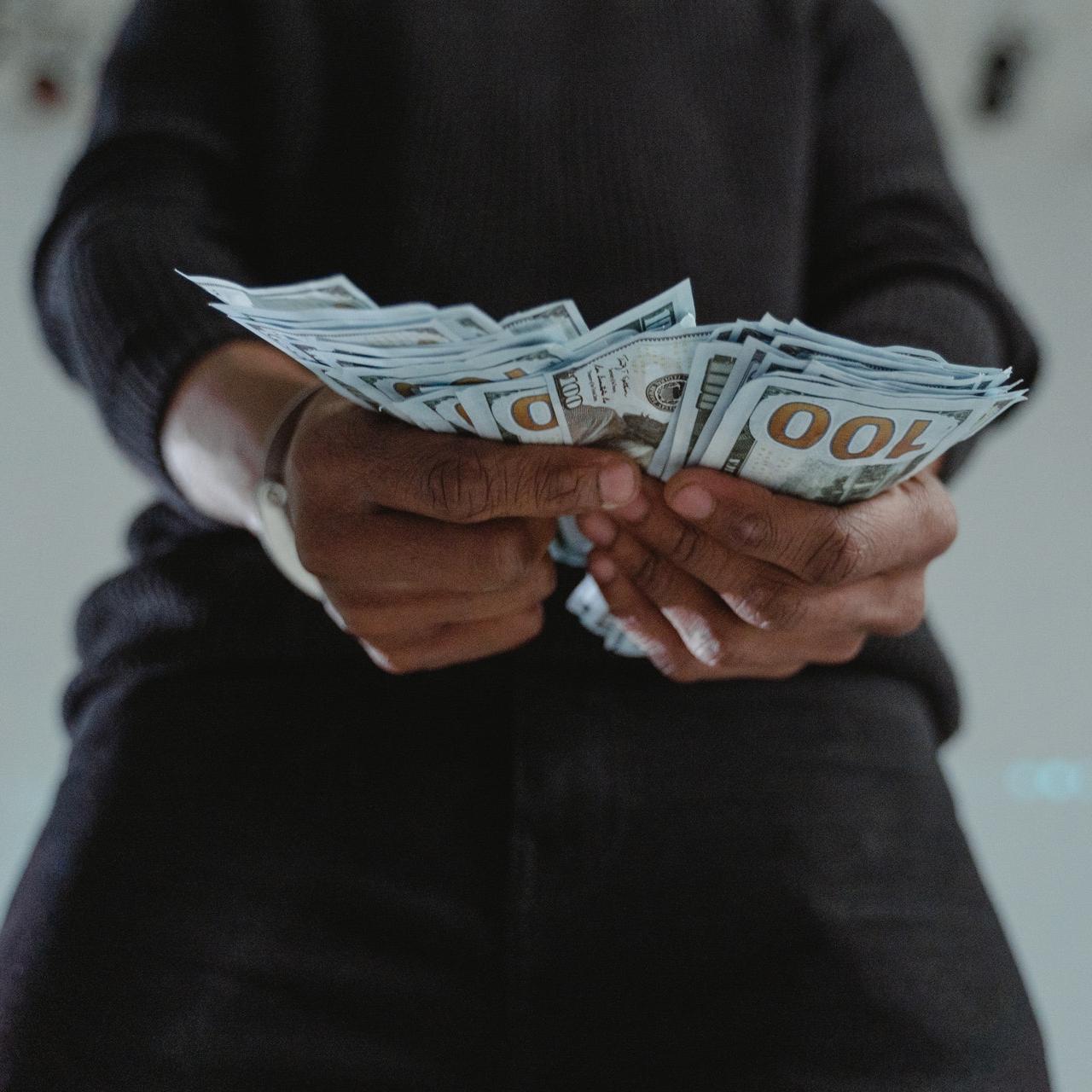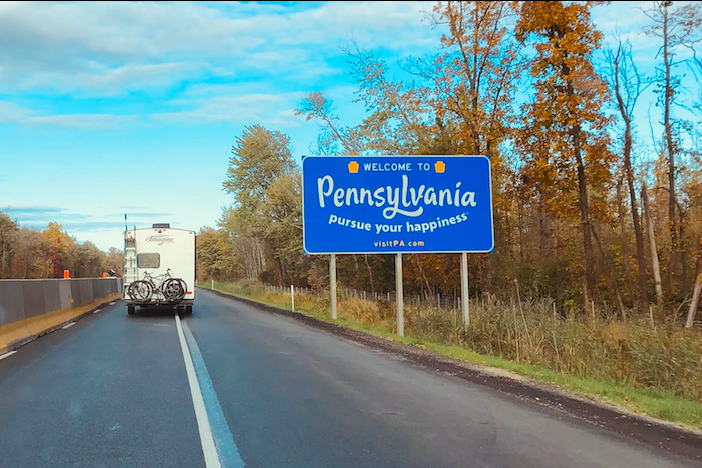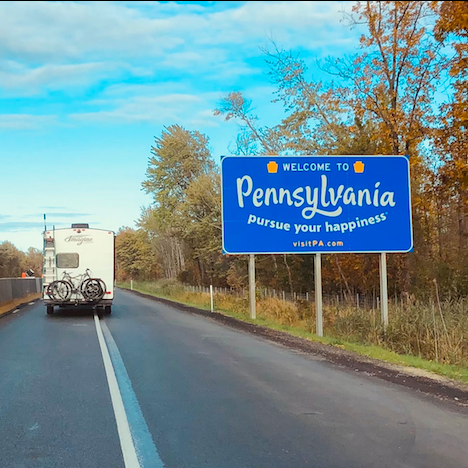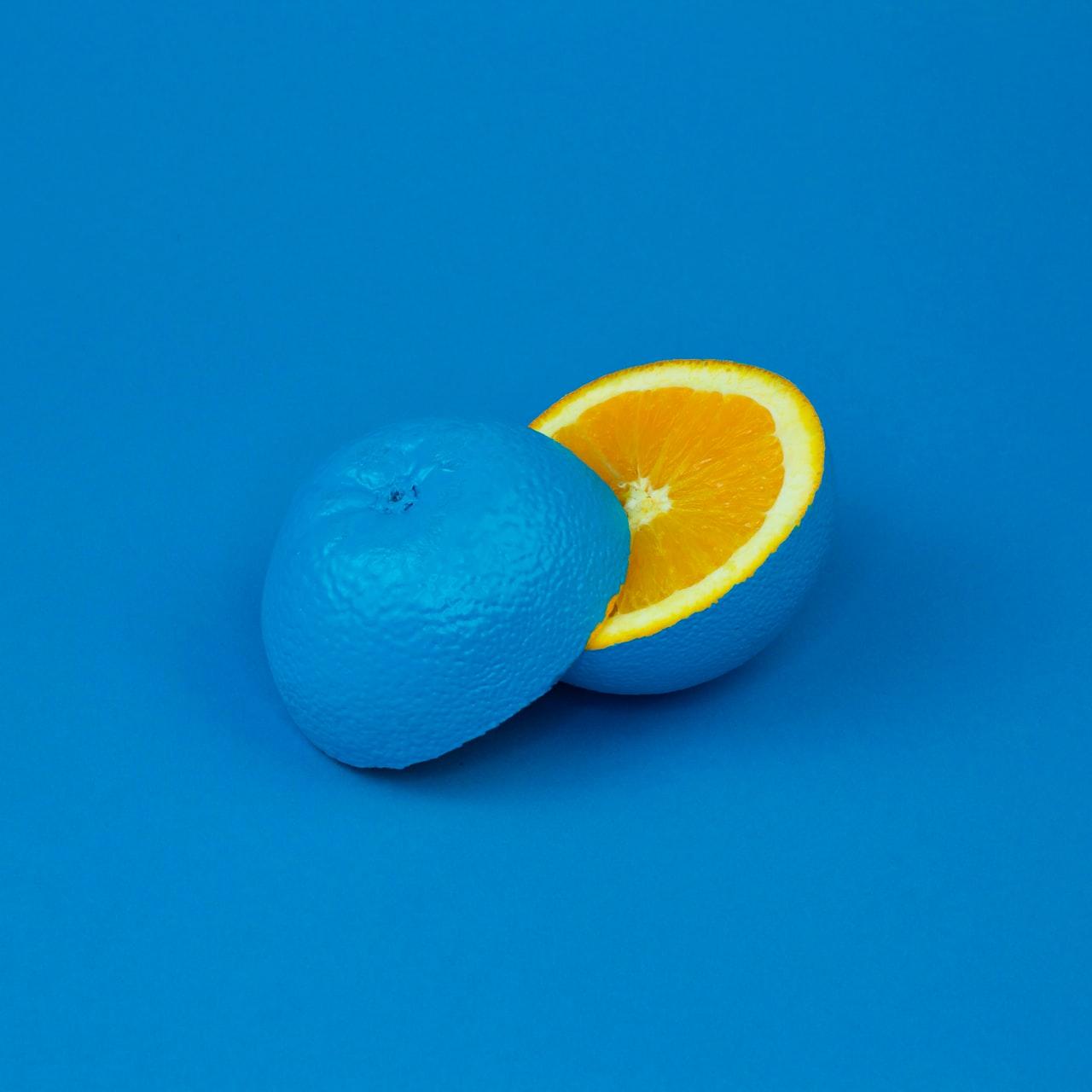Why Netflix’s 'Heartstopper' Must Be on Any Leader’s Binge-Watching List


From episode 7 in Heartstopper:
Charlie: "You didn't have to do that. I'm used to people saying stuff about me."
Nick: "No. But you shouldn't have to be. People shouldn't be saying stuff about you in the first place. You shouldn't have to put up with anything like that."
But too many of us have put up with it. And many of us have also seen, read and heard the endless messaging surrounding equity, diversion and inclusion, but that doesn’t mean all of us have wrapped our heads around these concepts. Far too many people still feel as if they aren’t been seen and heard, nor respected and valued, whether at school, the workplace or in society. On that very point of being heard and feeling included, the British series Heartstopper has understandably become a sensation across the LGBTQ community since it first launched on Netflix in late April. The eight-episode series has become a thing on social media, especially on Gay Twitter. But the series should resonate with anyone, including those who hold a leadership position. Heartstopper is a must-watch, as it’s about as close as anyone can get to actually being able to step into many of their LGBTQ peers' shoes.
There are countless reasons why it’s easy to get hooked on this Netflix series, which is based on the graphic novels and webcomics written by Alice Oseman. Let’s start with the cast, which shines starting with the chemistry between the two leads, Charlie and Nick, played by Joe Locke and Kit Connor; the stellar supporting actors and actresses, including William Gao’s portrayal of brooding classmate Tao; breakout star Yasmin Finney, who plays a transgender classmate coping with her own challenges; Jenny Walser, hilarious as the spooky yet supportive older sister to Locke's Charlie; and yes, the queen herself, Olivia Coleman, who has a small role in the series but is brilliant as Nick’s at times aloof, often perceptive and, in the end, a tearfully compassionate mum.
Anyone who’s remembered their years of teen angst and yearning to belong can relate to this series, emotions amplified by a stellar soundtrack that includes the likes of Greta Kline, Smoothboi Ezra, Baby Queen and chloe moriondo. Filmed throughout the U.K., ending with stellar scenes in the final episode at the hamlet of Herne Bay in southeastern England’s coastal Kent, the cinematography and visual effects help yank hard at one’s current or long-faded teenaged heartstrings. And, on the lighter side, Heartstopper lends itself to drinking games, as in taking a shot every time Charlie and Nick say “hi” to each other, or better yet, when Nick says, “yeah:”
Clearly, you don’t have to identify as LGBTQ to identify with several of the series' plot lines. Plenty of people of all backgrounds can relate to the constant micro-aggressions and tones of condescension, as when flirty year-11 Imogen snarks at a lesbian couple, “I’m not, like, homophobic. I’m an ally,” or when the sneering wealthy and entitled bully, Harry, tells Nick, “Maybe listen to your boyfriend; at least he knows his place.”
But the overriding reason why anyone in a position of leadership needs to watch Heartstopper is so they can finally grasp what some of their peers, direct reports and members of the community experience day after day. Many of us within the LGBTQ community are still made to feel invisible, or that our hopes, fears and wishes are less important and noteworthy than those of our straight and cis peers. And years of constant belittling and vile comments can still have their effects long after.
As in the case of Charlie, who for the first seven and a half episodes often feels as if he has to say “sorry” just because he exists, few adults in his life make an effort to make him feel valued, save his parents. One exception is the art teacher, Mr. Ajayi, who finally tells him:
“Don’t let anyone make you disappear, Charlie.”
That message alone could do a lot to so that those in a position of leadership not only stand up for a select few, but for all.
And, they'll be more, as Netflix has confirmed a second and third seasons are on the drawing board for Heartstopper.
Image credits: Netflix Media Center; Netflix Tudum
Living Wages Could be a Boon for Corporate Profits


The business case for a living wage is gaining traction in the corporate world. As the social and economic benefits of higher pay are becoming clearer, so is the understanding that the compounding effects of low wages are felt up the supply chain, according to a report from the coalition Business Fights Poverty. While the present model allows capital, and thereby corporate profits, to grow exponentially, doing so at the cost of the working poor is not sustainable. Corporate responsibility demands change, not just for the purpose of long-term profit preservation, but for the sake of stability, risk mitigation and even branding.
Half of the world’s population controls less wealth than 2,750 individual billionaires. Of course, it isn’t wealth at all when nearly 4 billion people are splitting 2 percent of the planet’s financial resources. In many export-heavy countries (i.e. the supply side), workers are earning less than US$1.90 in purchasing power parity per day. There are currently 630 million people classified as working poor, with working poverty rates in the main exporting countries topping out at 67 percent.
Low wages have a significant impact on health outcomes as well as familial stability and access to resources, which in turn effects productivity and stability in the workforce, while higher wages are linked to improved productivity and attendance. Therefore, paying a living wage goes a long way toward a more stable workforce.
According to Richard Anker, as quoted in the Case for Living Wages report, the logic for living wages is a succinct one: "The business case stems from the need for the sustainability of the entire economic system.”
Written in part to encourage corporate leadership to stop thinking of labor as a cost and reframe it as an investment, the report points out that the greater the income inequality in a country or region, the larger its social problems tend to be. And that’s simply not good for businesses nor corporate profits in the long run, which is why Business Fights Poverty is hoping to help shift the conversation from one where living wages are considered “nice to have” to one where they are “essential to good business practices and upholding human rights.”
That means extending wage expectations beyond the immediate business to the supply end and holding partners accountable for paying living wages as well. While pushback is to be expected, raising wages to a livable level has the end result of stimulating local economies, which in turn makes them more stable. That’s imperative considering that wages and working conditions correlate directly with supplier dependability – and, of course, corporate profits.
Investors are likely to perceive increased stability in the supply chain as lower-risk, and therefore invest accordingly. This presents a unique opportunity for those businesses choosing corporate responsibility down the full length of the value chain to outcompete those who continue to insist on paying the bare minimum. Corporate profits and supply chain stability aren’t the only thing that matters to investors, of course. As Gen Z joins the personal investor ranks, they’re doing so with near unanimous agreement that corporations have both social and environmental responsibility. And while they’re still learning to determine which corporate citizens are worthy of their support, Gen Z is already known for aiming to put their money where their morals are.
For all their branding, if businesses truly want to have a positive social impact, perhaps the best place to start would be with living wages for every worker. After all, what is the point of a grand mission statement if a basic opportunity to alleviate the societal problems caused by poverty and inequality is missed? Right now is an opportune time for businesses to get ahead of the curve and implement full-scale living wage policies in order to become part of the long-term solutions needed to eradicate these societal problems worldwide.
Image credit: Tima Miroshnichenko via Pexels
Pennsylvania Places Bet on Gas-Powered Hydrogen, Not Green Hydrogen


As the hydrogen economy heats up, renewable energy stakeholders in the U.S. are banking on green hydrogen from renewable resources to meet the demand. Meanwhile, fossil energy stakeholders are trying to carve out space for continuing to produce hydrogen from natural gas. Whether or not they succeed could come down to Pennsylvania, where policymakers are laying plans for a major new hydrogen hub.
Green hydrogen vs. clean hydrogen
The modern global economy relies on hydrogen for a wide range of goods and industries. In recent years that includes a growing interest in hydrogen for fuel cell vehicles, industrial processes and power generation, leading to a long-term surge in demand for hydrogen.
That should be good news for fossil energy stakeholders, because natural gas is the main source of the global hydrogen supply, along with coal to a lesser extent.
However, more sustainable pathways have emerged. Most of the activity is centered on green hydrogen, meaning hydrogen gas pushed from water with an electrical current supplied by renewable energy.
Green hydrogen was not commercially feasible until the cost of wind and solar power began to fall. Now that the green hydrogen market is maturing, the cost of electrolysis systems is also falling.
Green hydrogen has become an attractive pathway for decarbonization, but fossil energy stakeholders are attempting to hold onto a share of the hydrogen market by attaching carbon capture systems to conventional hydrogen production and dubbing it “clean” hydrogen.
The Pennsylvania hydrogen test
It is difficult to see how “clean” hydrogen from natural gas can attract manufacturers and other businesses along the supply chain, when they are straining to shake off their relationships with fossil energy. It would seem that green hydrogen has an unbeatable advantage, but natural gas advocates still have a powerful advantage, and policymakers in Pennsylvania are about to put that to the test.
Under the Bipartisan Infrastructure Law (also known as the Infrastructure and Jobs Act, or IIJA), last February the U.S. Department of Energy (DOE) launched an $8 billion, competitive grant program aimed at establishing at least four “clean hydrogen hubs” in the U.S. Pennsylvania has put in for a slice of the pie, leveraging its considerable natural gas resources.
“My administration has been working closely with energy, labor and industrial stakeholders across all sectors to develop the public-private partnerships needed to address the challenges of industrial sector decarbonization and develop the necessary conditions for the commonwealth to be a leader in deploying clean hydrogen and carbon capture technologies,” Pennsylvania Governor Tom Wolf emphasized in a May 16 press release.
To make it clear that the “clean” hydrogen referenced by Governor Wolf involves natural gas, the press release also notes that “Pennsylvania is well-known for its bounty of natural resources and is an East Coast leader for natural gas production.”
The fix is in for natural gas
Given the force of the green hydrogen trend, it is tempting to view the Pennsylvania hydrogen hub proposal as a non-starter. However, by law the $8 billion allocated for new hydrogen hubs must include at least two located in gas-rich regions of the U.S.
Aside from the legislative carveout in the Bipartisan Infrastructure Law, natural gas stakeholders have another advantage in Pennsylvania. The state’s tepid renewable energy profile places green hydrogen stakeholders at a disadvantage.
The trade group American Clean Power (ACP) currently ranks Pennsylvania down at number 27 among the 50 states for installed wind, solar and energy storage capacity. Meanwhile, other states where green hydrogen hubs have been floated include Texas at (number 1 on ACP’s list), California (second, via ACP) and North Dakota (13 on ACP’s list)
More opportunities for green hydrogen hubs
On the other hand, a high ranking does not seem to be a prerequisite for green hydrogen activity. Utah (26 on ACP’s list) has emerged as an early adopter of integrated green hydrogen infrastructure. Proposals have also surfaced in Missouri (24) and Mississippi (44).
Perhaps the most ambitious plan of all is a newly announced multi-state green hydrogen consortium that joins New York State (20) with New Jersey (35), Connecticut (43) and Massachusetts (29). Although none of the four states are currently ranked particularly high, they will begin to tap into their powerful offshore wind resources within the next few years.
All of this green hydrogen activity gives rise to a good question. If Pennsylvania does win funding for a gas-powered hydrogen hub, will it succeed commercially?
After all, just a few years ago gas stakeholders were buoyed by the false promise of a new petrochemical hub for Pennsylvania and the Appalachian region. Promoted by the DOE in 2019, the plan initially called for five new petrochemical facilities in the area. Shell developed the first one, but the others never followed.
Last month, Yale Environment 360 rendered a gloomy outlook for completion of the vision.
“Obstacles including global overproduction of plastic, local opposition to pipelines that feed such facilities, and public concern about the tidal wave of waste choking oceans and landscapes mean that even the region’s second proposed ethane cracker may never materialize,” Beth Gardiner wrote. “Additional plants look even less likely. The question mark over the industry’s once-grand hopes for Appalachia reflects larger doubts about its plans for dramatically increasing worldwide plastic production.”
That line about overproduction of plastic should send up red flags to policymakers keen on building a gas-powered hydrogen hub in Pennsylvania, considering the potential for competition from green hydrogen hubs elsewhere in the U.S.
A bottom-line twist to the hydrogen tale
So far, the relatively high cost of green hydrogen has provided natural gas stakeholders with a powerful advantage. However, that selling point is likely to evaporate more quickly than energy observers have anticipated.
Last week, the renewable energy industry news site ReCharge News was among those reporting that Bloomberg NEF global head of strategy Kobad Bhavnagri expects that a “tenfold reduction in the cost of hydrogen electrolysers coupled with ever-cheaper renewable energy” will result in a cost advantage for green hydrogen compared to hydrogen from natural gas by 2030.
Hydrogen hub or not, the improved outlook for low-cost green hydrogen could help kickstart more activity in Pennsylvania.
One sign of interest in the state is a proposal by two leading firms, Plug Power and Brookfield Renewable Partners, to leverage an existing hydropower facility on the Susquehanna River for green hydrogen production.
In another interesting twist, Pennsylvania’s nuclear energy industry could also come into play at some point in the future. With five nuclear power plants, Pennsylvania is the second-highest state for nuclear capacity in the U.S.
The DOE has been exploring systems that deploy thermochemical reactions as an alternative to electrolysis, and they have already identified waste heat from nuclear power plants as a good candidate for thermochemical green hydrogen production, which could put Pennsylvania in the catbird seat.
Pennsylvania may win DOE funding for its gas-powered hydrogen hub, but that may turn out to be a hollow victory after all.
Image credit: Addy Mae via Unsplash
3M’s Annual State of Science Index Gives Some Optimism


First, the good news. According to the latest annual 3M State of Science Index (SoSI), Americans of all ages have exceptionally high trust in science: 89 percent of younger generations (Gen Z and millennials) and 88 percent of older generations (Gen X and baby boomers) agree this is true.
Post-pandemic, there's more respect for science
These numbers also exceed pre-pandemic trust indicators. Pre-pandemic, 86 percent of those surveyed said they trust science, and 79 percent reported a trust for scientists. Post-pandemic, the percentages grew to 90 percent and 86 percent, respectively.
There is also a trend toward increased expectations in terms of science taking the lead to solve societal issues such as sustainability and healthcare. According to the SoSI, Americans want science in the driver’s seat giving priority to solutions for things like a clean water supply and sanitation (61 percent), air quality (53 percent), equal access to quality healthcare (50 percent) and the effects of climate change (48 percent).
For certain populations within the U.S., these priorities have leaped off the blackboard and occupy concern in their personal lives. Seventy-nine percent of Black Americans and 76 percent of U.S. Hispanics are concerned they or a loved one may be displaced from where they live in the future due to extreme weather related to climate change.
Threats to one’s local environment can create a health concern for people of color. Urban versus rural populations, asphalt versus "green space" living, are two of many instances of less healthy environments. Often these neighborhoods come with higher temperatures and increased emissions, as well as increased exposure to illnesses due to living in such dense spaces.
Awareness and its connection to fossil fuel consumption
There is more good news in terms of Americans’ addiction to fossil fuels. Consumption of petroleum, natural gas, and coal dropped by 9 percent in 2019 compared to 2020, according to the U.S. Energy Information Administration (EIA). This is the biggest annual decrease since the EIA started keeping track in 1949.
Still, in January 2022, natural gas consumption in the United States averaged 31.6 billion cubic feet per day (Bcf/d), the highest January average on record and the highest amount for any winter month.
Ongoing concern over misinformation
But if “knowledge itself is power,” as Francis Bacon said in 1597, then the consequences of lack of information — or worse, false information — can be devastating, as is the opinion of those surveyed in the 3M SoSI. (For the purposes of the SoSI, misinformation is defined as false or inaccurate information, especially that which is deliberately meant to sway views/opinions.)
Sixty-one percent of those surveyed indicated that false information — whether published online, in print or broadcast or TV news — can contribute to public health crises. Fifty-seven percent believe it creates more division within society, and 53 percent actually think it increases the effects of climate change.
Regardless of subject, 92 percent of Americans say misinformation is prevalent on social media, and 78 percent say that misinformation is prevalent in traditional news.
Perhaps nothing has tested the science and our faith in it as has the recent and ongoing COVID-19 pandemic, with all its variants, and the science which proves the value of vaccines. The U.S. Centers for Disease Control and Prevention (CDC) reports that the unvaccinated have three times the reported rate for COVID-19 than the vaccinated.
From April 4 through Dec. 25, 2021, more than 6.8 million cases of COVID-19 were reported among the unvaccinated, compared to less than 2.9 million among those who received a COVID-19 vaccine. Opposing science became a form of misinformation resulting in tragedy.
But the messages aren't getting through to everyone
During the same period of time, NPR reported a correlation between political party and COVID-19 outcomes in that the reddest tenth of the country saw death rates that were six times higher than the bluest tenth.
Despite the cautions coming from science, 20 states — all with Republican governors — restricted or banned proof-of-vaccination requirements through passing laws or executive orders. And 36 “red” states have ended mask requirements through executive order.
But did misinformation cause the increase in the COVID-19 rate for infection and mortality in those geographic areas where the disease was more prevalent? Where the media or politicians insist on propaganda in defiance of established medical and scientific data, there must be a contradictory view to go with new messaging. So, to answer that question: probably.
Image credit: Julia Koblitz via Unsplash
Going Beyond Burgers, European Startup Makes the Impossible: Plant-Based Steak


If it looks like a duck, swims like a duck, and quacks like a duck, then it probably is a duck, right? You could say something similar for burgers, though brands like Impossible Foods and Beyond Meat have done well in putting such assumptions to rest. But if it looks like a steak, sizzles like a steak and is marbled like a steak, it’s got to be beef from a cow, doesn't it? Well, not any longer, says one startup out of Slovenia that has just brought to market a plant-based filet mignon.
No, Juicy Marbles isn’t the name of a video game that should be vetted to gauge whether it’s appropriate for kids or adults. It’s a legit company out of Slovenia that recently rolled out what its founders say is the world’s first plant-based steak.
The company’s work has resulted in a product that very closely mimics the texture and marbling of a cut of beef, and the company says its technology will allow it to produce these plant-based “steaks” at scale.
So, what are the base ingredients comprising what the company describes as its patent-pending “Meat-o-Matic 9000” technology? The steaks are derived from a relatively short list, which includes soy protein concentrate, wheat protein isolate, sunflower oil, beetroot powder, kappa carrageenan, methylcellulose, yeast extract, iron and vitamin B12.
As is the case with plant-based products made by brands including Gardein, Impossible Foods and Beyond Meat, a tried-and-true meat eater will be able to tell the difference. One isn’t going to be fooled into believing that they are dining on a $100 entre at the likes of Morton’s or Fleming’s. But an exact plant-based imitation isn’t the point, a Juicy Marbles representative told TriplePundit earlier this week. “Some of the founders are meat-eaters themselves, but they are aware of the impacts that the meat industry has on the planet, and they are determined to do something about it,” she said.

The company cites statistics that have been behind its mission, such as estimates that beef production alone uses almost 60 percent of all agricultural land on the planet but provides less than 2 percent of calories consumed across the globe. Further, about 2 billion people struggle daily with food insecurity as a result of systemic inequalities across the world’s food production systems — a number that increased during the pandemic.
Further, critics of the global meat industry have long decried its ties to deforestation worldwide, which certainly applies to Juicy Marbles’ home country. While more than 60 percent of Slovenia’s land is covered in forests, the country has lost approximately 4 percent of its tree cover since the turn of the century.
“What’s interesting about the challenge of fixing our food system is that solutions need to protect the environment and culinary traditions at the same time," Vladimir Mićković, one of Juicy Marbles’ co-founders, said in an emailed statement to 3p. "The culture around meat is beautiful and needs to be preserved, as it brings us together in celebration of life and just being together, present and alive. If we keep the culture, and just remove current means of production, we’re going to have a good time in the future."
On that point, don’t expect that exact filet mignon mouthfeel, but if one considers replacing a cut of beef with Juicy Marbles’ plant-based cut for a recipe that usually requires shredded beef, have at it, said the company’s spokesperson.
Currently, the plant-based steaks are available online, and Juicy Marbles expects to launch in restaurants and retailers later this year. Future plans include more “cuts” such as tenderloin, ribeye and sirloin. For the company’s filet mignon, one pack of four, four-ounce steaks retails for about $40. Larger orders come with free shipping. The company’s current capacity explains the price, but within one or two years, Juicy Marbles says it could meet — and even, pardon the pun, “undercut” — the price of conventional meat.
Consumers have responded in kind: Juicy Marbles sold out its inventory eight hours after the filets launched. The company anticipates its next shipments to drop mid-June.
Image credits via Juicy Marbles
We Don't Have to Solve Business Problems with Food Waste


When asking indigenous farmers about food waste, A-dae Romero-Briones, director of programs for the First Nations Development Institute, said they expressed puzzlement. According to Romero-Briones, indigenous farmers didn’t know why they would operate a system that intentionally wasted food. After all, if they were doing things right, they wouldn’t be wasting any resources. Basically, she said that to these farmers, waste was an indicator that the system wasn’t working quite right.
Romero-Briones shared this insight during this year’s ReFED Food Waste Solutions Summit in Minneapolis, where farmers, scientists and business leaders came together to share and discuss challenges and solutions to global food waste.
The food system isn’t working as it should
Well, other speakers made it clear: the food system at large certainly does produce waste, at both national and international scales. According to ReFED, a nonprofit that uses data-driven solutions to solve food waste, over a third of the food available in the United States goes unsold or uneaten, with about a quarter of it going to waste. The proportion is about the same across the globe, the World Wildlife Fund (WWF) reports, and produces up to 8 percent of human-caused greenhouse gas emissions. In monetary terms, ReFED estimates that this food waste cost the U.S. about $285 billion in 2019.
Dr. Jonathan Foley of the climate solutions nonprofit Project Drawdown emphasized during the meeting that if we are to meet our climate goals, including those outlined in the Paris Agreement, we can’t rely solely on technological innovations, such as advancements coming from the renewable energy sector. We also have to clean up our act and correct the very many foolish little things we’ve built into daily habits and company policies, one of which is wasting food. “New is good, but now is better,” he said.
Leaning into a less wasteful food industry
Taking a look at just part of the U.S. food system, ReFED estimates that more than 10 million tons of surplus produce come from the retail sector, the largest proportion of which ends up in the landfill. In an age of zero waste corporate commitments, though, there is hope. “There’s a lot more leaning in than there used to be,” Suzanne Long, chief sustainability and transformation officer at Albertsons Companies, said during the summit. The grocery retailer, one of the largest in North America, has a goal of diverting all food waste away from landfills by 2030.
Despite challenges to this goal, such as collecting meaningful data and meeting the variety of municipality requirements, Long said she’s found that the paradigm around food waste is shifting, and in a positive direction. Instead of having to automatically default to paying to compost food, Long said Albertsons has been hearing more often from companies that want to take the waste off their hands for free. One example has been Do Good Foods, a new company that turns food waste into chicken feed. Albertsons then buys that chicken to sell in its stores, Long said, and saves money in the process.
The urgency to find more solutions for stopping food waste
Albertsons’ commitment is a fundamental game-changer, Pete Pearson, WWF’s senior director of food waste, said at the summit, emphasizing how important it is that the company is beginning to cash in on that asset that we call waste. He said every industry has a unique pattern that can turn food waste into profit. “We’re going to look back and say we were silly, because there was so much value in what we waste,” Pearson said.
Our norms are so silly, in fact, that Andrew Shakman, chief executive officer of the B Corporation Leanpath, said many companies have accepted food waste as a given. He went so far as to say that the food waste he’s seen coming from industry is not accidental, and it’s not careless either. Instead, he said food is often treated as a low-cost way to meet rigid business policies. “We don’t have to be solving our problems with food waste,” he noted.
Shakman said leaders tend to bring limiting beliefs to issues around food waste. For a buffet restaurant, he said, the thought tends to run like this: we have to provide the same options to all our customers, so we make more food than will be eaten. The cost to a company’s bottom line is rarely taken into consideration, he said, even though the solution may be as simple as switching to made-to-order during lulls, which not only saves resources but also provides customers with fresh and hot meals.
Executives often fail to see the loss in wasting food, Shakman said, a loss that may be entirely clear to the employee tasked with pushing perfectly good food down the disposal. But there is a real cost. Shelf Engine, an artificial intelligence-based grocery forecaster, has found that in the process of diverting over 4.5 million pounds of food from landfills since 2016, their clients have experienced an average expansion of 15 or so percent of their gross margin dollars.
One thing’s for certain – we can’t claim that our food system runs well until we find a fruitful use for every byproduct…until “food waste” becomes an obsolete term.
Image credit: davisuko via Unsplash
More Consumers Doubtful Recycling Works, Study Reveals


Despite a strong desire to help the environment by recycling, American consumers are rapidly losing faith that the paper, plastic and metal containers chucked into those blue bins are being recycled, according to research presented at a sustainability conference today.
The growing lack of trust in recycling is a threat to new circular economy business models that are dependent on a steady flow of feedstock from resource-recovery centers, says Suzanne Shelton, founder and CEO of Shelton Group.
“Recycling is our guilt-assuaging system,” Shelton told sustainability professionals attending GreenBiz Group’s Circularity 22 event in Atlanta. “The context is shifting so that people are beginning to feel uncomfortable participating in a single-use, fast-fashion… economy.”
While 95 percent of Americans believe recycling helps the environment, 49 percent say the current system is not working well, and 30 percent are not confident that what we put in recycling bins actually gets recycled, according to research conducted by Shelton Group in early February.
The skepticism is growing. In 2019, only 14 percent of Americans were not confident their recyclables were recycled. In 2020, it was 23 percent, said Shelton, adding, “The more they learn about the way the recycling system, works, the less confident they are.”
Shelton, whose Knoxville, Tenn., agency promotes itself as the nation’s leading marketing communications firm entirely focused in the environmental, social and governance (ESG) arena, said American consumers are keen to buy products designed to be refilled and reused.
Circularity is the new “virtue signal,” she said. “The brands that figure that out are the brands that are going to win.”
Among the brands lauded by Shelton were Starbucks for refillable cups, SC Johnson for concentrated cleaner refills, Levi’s for making jeans that last longer, Body Shop for adding refill stations to its stores and Eastman for investing in molecular recycling facilities to recycle more plastic waste.
Image credit: Dave Armon
Finally, a Big Company Stands Up for the Queer Community


Call it the “Disney Effect” — after the fallout over the entertainment company’s tussle with Florida’s governor and legislature over the so-called “Don’t Say Gay” bill, many companies and their executives are now far too spooked to speak up over such challenges as the continuing assaults on reproductive rights and those of the queer community. But at a time when corporate silence over governments’ trampling on the rights of some citizens is deafening, Unilever’s ongoing actions stand tall.
The CPG giant has just announced a plan that it says could boost the quality of life for LGBTQ communities across the U.S., particularly those within rural areas and for queer people of color as well.
Editor's note: Be sure to subscribe to our Brands Taking Stands newsletter, which comes out every Wednesday.
By offering support to various local partners, Unilever will help launch programs that focus on problems such as the fight against conversion therapy, HIV decriminalization, youth homelessness, anti-bullying campaigns, mental health and even nutrition programs centered around the LGBTQ community. In addition, Unilever says it will lend a hand to tackle anti-transgender legislation that is sweeping across the U.S. So far, the company has signed on to various campaigns that are urging state legislatures to stop enacting anti-LGBTQ and anti-trans laws.
This year, through its ongoing United We Stand campaign, Unilever will assist in the launching of such efforts and work with LGBTQ communities located in Monroe, Louisiana; Moore, Oklahoma; Clemson, South Carolina; Florence, Alabama; and throughout Southern Missouri. The five areas are among the U.S. municipalities that score low on the Human Rights Campaign’s Municipal Equality Index, meaning they lack support services and non-discrimination protections for LGBTQ people.
Nonprofits and community groups that will carry out these programs include local chapters of Louisiana’s Forum for Equality, South Carolina Black Pride and PFLAG.
This work is certainly more than what many companies offer, which is a rainbow slapped on the corporate logo and shown during Pride Month, a token gesture that's reached a point at which many in the queer community dismiss it as "rainbow washing."
“We are continuing to work closely with local grassroots organizations in areas where LGBTQI+ support is needed the most,” said Fabian Garcia, Unilever North America’s president, in an emailed statement to TriplePundit. “We saw these organizations do meaningful work over the last year and want to continue supporting their impactful programs through our United We Stand campaign year-round.”
Image credit: Anete Lusina via Pexels
How to Support your Activist Employees When Roe v. Wade Crumbles


The leaked Supreme Court draft opinion striking down Roe v. Wade sparked a powerful swell of street protests across the U.S. last week. For all the noise, though, voices of protest were quickly silenced as the news cycle turned to other matters. Nevertheless, the abortion battle has just begun. Employers who profess to uphold abortion rights need to prepare a plan for supporting their employees as they carry the fight to the next stage this summer and into Election Day 2022.
Words matter: anti-abortion = anti-pregnancy
With a powerful assist from the media, the anti-abortion movement has succeeded in casting itself as exactly that: anti-abortion. The movement has also successfully inserted itself into the public conversation as a “pro-life” or “right-to-life” movement.
However, in reality those words stand only for preserving a pregnancy above all else. In the context of a pregnant person’s life and wellbeing, they have no meaning.
Editor's note: Be sure to subscribe to our Brands Taking Stands newsletter, which comes out every Wednesday.
The public interest in protecting a viable fetus from intentional harm is a matter that few would disagree with. However, designating zygotes, embryos or pre-viable fetuses as untouchable living entities goes far beyond a reasonable level of community concern. It establishes a dehumanizing hierarchy that treats pregnancy as a strictly biological function subject to state and community surveillance at every stage.
Through that lens, the anti-abortion movement is anything but pro-life. It is, in fact, an anti-pregnancy movement that denies all pregnant people their human rights, whether or not they intend to carry their pregnancy to term.
Lessons from ACT UP
Employers who profess to support a person's “right to choose” need to re-frame their thinking. Abortion is not an either-or, binary decision of whether or not to terminate a pregnancy. It goes to the heart of a pregnant person’s rights in a free society.
In the context of human and civil rights in a modern democracy, the leaked Roe v. Wade decision allows policy makers and community members to treat pregnant people as others. They have no civic status. They exist outside of society. They are invisible. Their lives are of no consequence, except to the extent that they are biologically capable of supporting a pregnancy.
Given the stakes, employers should not be shocked, then, to see their employees push back against the leaked draft in ways that are deemed socially unacceptable, such as protesting at the private home of a Supreme Court Justice.
The point of such actions is to become visible again, and the impact can be profound.
The ACT UP (AIDS Coalition to Unleash Power) movement of the 1980’s and 1990’s provides a powerful demonstration of the effectiveness grassroots activism that goes beyond the polite choreography of public marches.
ACT UP was a response to the early years of the AIDS outbreak in the U.S., when those suffering from the disease were rendered invisible by policy makers, up to and including the administration of then-President Ronald Reagan.
Members of ACT UP did not stop at marching, writing letters or taking out full page ads in The New York Times. They were determined to become visible in the media. They were determined to have their voices heard. They deliberately — and always without violence — threw themselves into uncomfortable public situations in order to command the news cycle, and they succeeded.
Pregnancy rights and the new fight for visibility
Forming an awareness of the methods of ACT UP is a good start for corporate leaders who seek to support their activist employees. As uncomfortable as public activism can be, it is an appropriate response to a life-or-death situation.
Employers can also help by becoming more familiar with the media depiction of the ACT UP movement. Well-off gay white men were prominent among the original ACT UP founders. The media adopted them as the heroes of the movement despite significant involvement by gay men of color, women and others who did not fit the profile.
As a result, critics of ACT UP worked to portray it as an elitist movement, separate from the concerns of ordinary people.
The new fight for pregnancy rights is already facing the same kind of manipulation. Abortion has long been framed as an issue that pits privileged white women against women of color, and that sort of framing will only intensify in the weeks ahead.
In addition, there has already been some divisive pushback against language that includes all pregnant people. Employers need to insist that pregnant people who do not fit the conventional description of “woman” are just as visible in the pro-pregnancy movement.
In that regard, employers can leverage their experience with DEI programs to help ensure that pregnancy rights are viewed through the lens of human rights for all.
Employers can also support their activist employees by finally, publicly and unequivocally withdrawing financial support from anti-pregnancy policy makers.
Publicly deploying corporate financial muscle may force business leaders into some uncomfortable positions as Election Day 2022 approaches, but they have no choice.
Now that the draft decision striking down Roe v. Wade has leaked, the battle lines on abortion are fixed, and there is no middle ground.
Image credit: Gayatri Malhotra via Unsplash
4 Companies Stepping Up for Military Appreciation Month


Since 1999, the U.S. Congress has designated each May as Military Appreciation Month. The month includes several important days the military commemorates, including VE Day (May 8, to mark the Allies’ victory in Europe toward the end of World War II), Military Spouse Appreciation Day (May 12) and, of course, Memorial Day, a time to mourn the loss of military personnel who died during armed conflict.
Despite the words of respect and admiration frequently directed to active military personnel and veterans here in the U.S., the private sector’s record on hiring and retaining employees who served in the military is mixed at best.
“Though the overall rate of veterans’ employment has improved along with the general employment rate, veterans still face many barriers to advancement up the corporate ladder,” TriplePundit’s Tina Casey wrote back in November 2019.
To that end, we're highlighting four companies that are backing up their supportive words during Military Appreciation Month with action.
American Airlines and the Honor Flight Network
One of the finest honors a veteran can receive is the opportunity to participate in an “Honor Flight” to Washington, D.C. to meet other war veterans and experience the U.S. capital’s spectacular monuments, with all of their expenses paid. (Full disclosure: My uncles, one a World War II veteran and the other who was in armed combat during the Korean War, participated in a 2017 Honor Flight.)
As with its competitors in the commercial aviation sector, American Airlines has its own military recruiting policy. Earlier this month, American Airlines was among the companies marking the 250,000th veteran who was able to join this once-in-a-lifetime travel opportunity. The airline announced it would donate 15 million air miles to support and continue the Honor Flight Network’s ongoing programs.
CBRE
The commercial real estate services and investment giant has long stood out for various communities, including LGBTQ people as well as people of color. Count in the military community within CBRE’s diversity and inclusion efforts. The company says 2,000 of its employees are current and retired military, and it's actively recruiting within this community for several fields, from building maintenance to finance to information technology.
Home Depot
Whether working at the retailer is a transitional steppingstone upon the return to civilian life, or if former military personnel seek to harness their skills honed during their service at the company’s Atlanta headquarters, Home Depot is one example of a company that is aggressively hiring veterans. The company says it has had more than 35,000 veterans who have launched or continued their careers with the retailer, and it has open positions in fields including management, logistics and information technology.
“It was wonderful knowing I had this company behind me,” said Darren Hammerstad, a U.S. Navy reservist based in Jacksonville, Florida, who has been with Home Depot for 14 years and at one point had to leave due to a one-year deployment to Bahrain. “One of the best feelings is knowing that I can step back into my job when I get back. This place means the world to me.”
T-Mobile
The wireless carrier says it is committed to hiring 10,000 veterans and military spouses by 2023. Further, T-Mobile has been partnering with military-focused nonprofits including Hiring Our Heroes, an initiative that seeks to connect U.S. businesses with active military personnel, retired military, veterans and their spouses.
In a public statement commemorating Military Appreciation Month, T-Mobile’s Deeanne King, the company’s chief human resources officer, offered up a high-level summary of the brand’s commitment to military families. “In the event a military employee is called to duty, they’re eligible for their full base pay plus commission during deployment — even if it’s their first day on the job — and they’re eligible for supplemental pay for an additional 50 weeks,” King wrote.
Image credit: Jeremy Straub via Unsplash